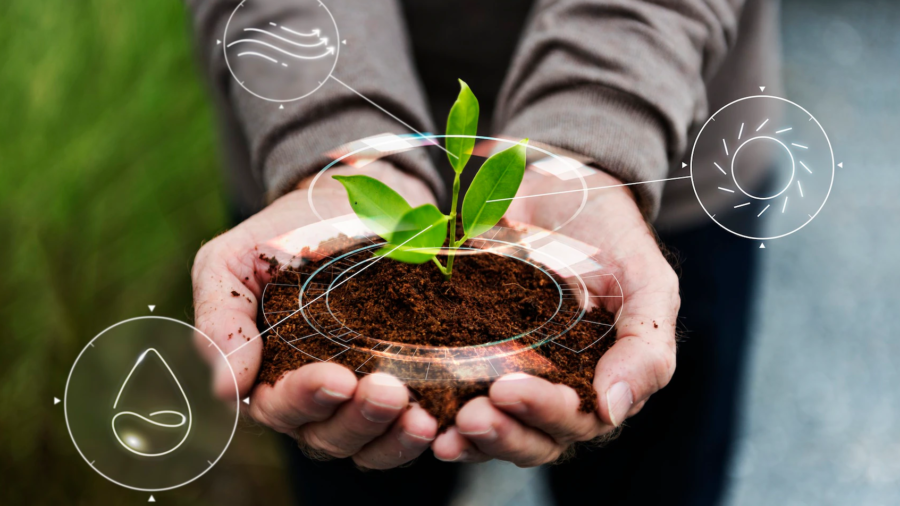Global warming coupled with climate change has created acute global sustainability problems which require immediate attention. The only feasible and reliable solution for the situation that has emerged over the last few decades is an alternative economic approach—shifting from the unidirectional economic model, i.e., Linear Economy (LE) to Circular Economy (CE). Before we dive into Circular Economy and its importance, let’s have a microscopic view of Linear Economy and its disadvantages.
Linear Economy: No light at the end of this tunnel
A linear economy is commonly known as the “take-make-dispose” economic model. It can be defined as an economy where raw materials are processed to be transformed into finished products. The products are used by the consumers according to their needs/preferences and finally, thrown away as waste. The value or revenue in this model is generated from the production and sale of the products.
In a linear economic model, all the raw materials collected to create the products are finally disposed of in landfills. Theoretically, a successful linear economy is sustainable in the future only if there is an infinite supply of raw materials. Unfortunately, this is far from the truth. The steady decline of essential raw materials has already begun, shifting the balance of demand and supply.
The present economy is only profitable by continuous extraction of resources and consumption of products. But a vast majority of virgin resources are finite and are bound to get exhausted. And when it does, the linear economy will collapse, irrespective of how profitable or valuable it is.
Furthermore, let’s consider an ideal situation of being blessed with an infinite supply of raw materials. We will still be plagued with a colossal amount of discarded products that negatively impact the environment and need exorbitant management techniques to store the waste. Evident from the alarming global sustainability issue and burdened with the knowledge that demand will never stop, economists ventured to find a solution to the quintessential question—how to grow the economy without exhausting our planet’s resources? The environmental deterioration cannot be ignored, nor can we afford to give up our way of living. Where do we draw the line? Where is the middle ground to economic sustainability?
Circular Economy: The stairway to a sustainable future
The circular economy is a disciplined strategy to a regenerative economic design that is advantageous to businesses, society, and the environment or, simply put—benefits people, profit, and the planet.
Unlike the linear economy, which is unidirectional, a circular economy is cyclic. It’s a “take-make-recycle” model aimed at reducing the consumption of finite resources without affecting the value generated from them. Circular economy has numerous benefits —both environmental and economic when compared to the current linear economy.
Environmental Merits
A circular economy constructively aids our environmental improvement goals by the ripple effect. It reduces greenhouse gas emissions due to decreased use of raw materials; Less raw materials used results in minimized resource extraction by up to 70%; A scale down in resource extraction and production reduces the pollution and landfill overflow. [1] Additionally, overall reduced production and disposal of products significantly lessens the land use, soil, water, and air pollution, and helps in climate change. Following the circular economy model in the agricultural arena boosts the soil nutrient value and health. When the waste is returned to the soil through anaerobic processes or composting, the ecosystem balance is restored. [1]
Economic Merits
Economically, circular economy can be a game-changer. In a resource-dependent linear economy, companies often face the price volatility of raw materials due to geopolitical crises and untold environmental crisis. However, circular economy eases companies’ dependency on raw materials and aids them to become more resilient and less risk-driven. [1]
The circular economy can reshape the current business model. Products no longer needed to be owned by the customers; instead can be rented or leased depending upon the type of products and need of the customers. Manufacturers remain responsible for the products, and they only rent their service to the customers. This leads to a radical change in building and maintaining the products since engineers and designers know how to take care of the products to make them last longer. This service-based model also increases consumer interaction and can promote more customer satisfaction and loyalty. [1]
A prime factor in a circular economy is that revenue is not directly proportional to resource consumption, leading to products and materials becoming more functional, reusable, and repairable. New revenue-generating services are created, which potentially increases the GDP and, therefore, the economic growth. [1]
Businesses also profit from reduced energy consumption, lower input costs, cutting costs off with
waste, etc. Profit opportunities are immense in a circular economy; all it needs is proper
understanding and implementation. [1]
The roadmap ahead begins by looking behind
Although the term is recently coined, the concept of circular economy has been around for centuries. When humans lived in sync with Mother Nature and considered ourselves a part of the earthly life cycle respecting nature for its countless blessings, the circular economy was functional, albeit in its crude form.
A sustainable human society needs a sustainable economy. Circular economy out guns linear economy and is a much better substitute to the economic sustainability problem. It’s about time we re-embrace our relationship with nature and use the technology and tools at our disposal to create a sustainable economy that not only benefits this generation but generations to come.
References:
- Youmatter. 2021. Circular Economy – Definition, Principles, Benefits and Barriers. [online] https://www.google.com/url?q=https://youmatter.world/en/definition/definitions-circular-economy-meaning-definition-benefits-bar&sa=D&source=apps-viewer-frontend&ust=1683967633687371&usg=AOvVaw3pyAhiuHwIH07_tJuewmF7&hl=en-GB
Available at: [Accessed 31 March 2021].

